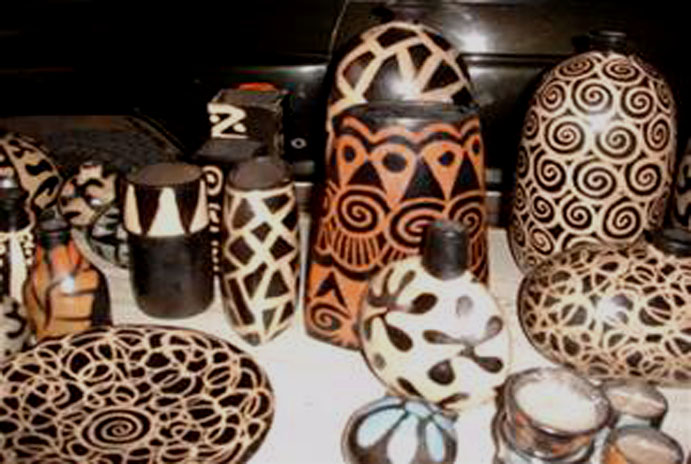Los Naranjo is the site of a former Lenca settlement on the shore of Lake Yojoa. Although little can be seen of the former city, the site offers a mixed habitat of woodland and marshes that is outstanding for bird watching. Examples of Lenca ceramics and other artifacts can be seen in the nearby museum of Comayagua.
The Lake Yojoa region of Honduras lies about 80 kilometres (50 mi) from what was defined as a probable boundary of the Maya territories. It is presumed that the people of Los Naranjos spoke Lenca, a language that is indigenous to Honduras and El Salvador. The Lenca language is nearly extinct in modern times and there is a movement to preserve and restore the language, as there are still people of origin. From 1967 to 1969, archaeologists Claude F. Baudez and Pierre Becquelin periodically excavated the region. The two published the work Archeologie de Los Naranjos as a field guide for their findings. The work was written in French and an English translation is not readily available. The book includes both pictures of artifacts and tables that explain time periods and locations of uncovered antiquities. They found sherds of ceramic vessels that came from four different time periods, suggesting prolonged use of the site. They used four phases from which the artifacts they discovered came, Middle Pre-Classic or Jaral (800-400 B.C.E.), Eden which is divided into Late Pre-Classic or Eden I (400-100 B.C.E.) and Early Classic or Eden II (100 B.C.E.-C.E. 550), Late Classic or Yojoa (C.E. 550-950) and Terminal Classic or Rio Blanco (C.E. 950-1250). Various antiquities found at the site include jade figurines, clay pottery and a jadeite hand axe, many of which suggest relation to Olmec origin. Clay pottery included findings of polychrome, monochrome and Ulua bichrome coloration. Each varying coloration seems to have existed in different time periods. The stratigraphy, or way that strata separates time periods, suggests that the region had been occupied for a long period of time. The oldest layers of strata contained monochrome pottery with little or no design. Sherds of pottery in the nearby La Sierra site seem to have direct ties with the pottery of Los Naranjos in the Late Classic period. Newer layers of strata showed polychrome pottery that was more advanced. Most of the pottery found in the region was made locally, although some may have been traded for. Radiocarbon dating of 7 sherds from the excavation site provided the basis for the time periods. The white slipped polychrome pottery of the Terminal Classic period at Los Naranjos is "Las Vegas" polychrome, similar to types of "Las Vegas" polychrome at Comayagua. It is in close stylistic relation to sherds from Rivas Papagayo but earlier in date.

